How to Grow and Care for Bok Choy: The Ultimate Insider’s Guide to Thriving Plants
- May 9, 2024
- 0 comment
Learn how to grow and care for bok choy with our insider’s guide. Discover expert tips for thriving plants, from planting to harvesting, and boost your yield. Bok choy, a versatile and nutrient-rich leafy green, is a favorite among home gardeners and chefs alike. Whether you’re a seasoned gardener or just starting out, this insider’s guide will help you grow and care for bok choy like a pro.
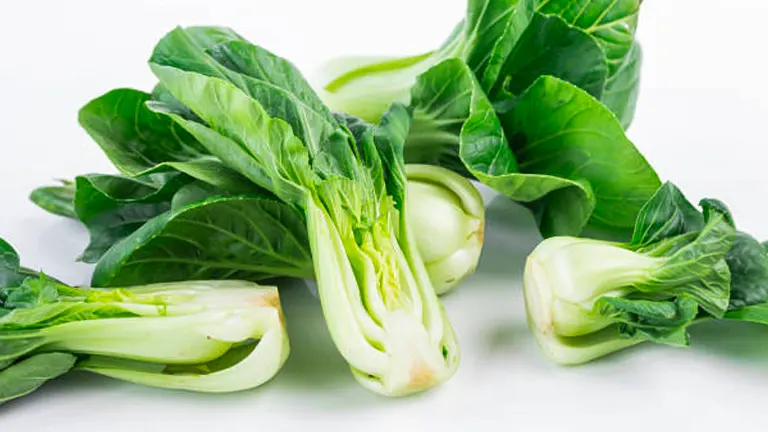
We’ll walk you through every step, from selecting the best seeds to harvesting vibrant, crisp plants. Get ready to maximize your yield and enjoy lush, thriving bok choy in your garden or kitchen.
Table of Contents
- Understanding Bok Choy
- Preparing to Plant
- Planting Bok Choy
- Daily Maintenance and Care for Bok Choy
- Pest and Disease Management
- Harvesting Bok Choy
- Storing and Using Bok Choy
- Conclusion
- FAQs
Understanding Bok Choy
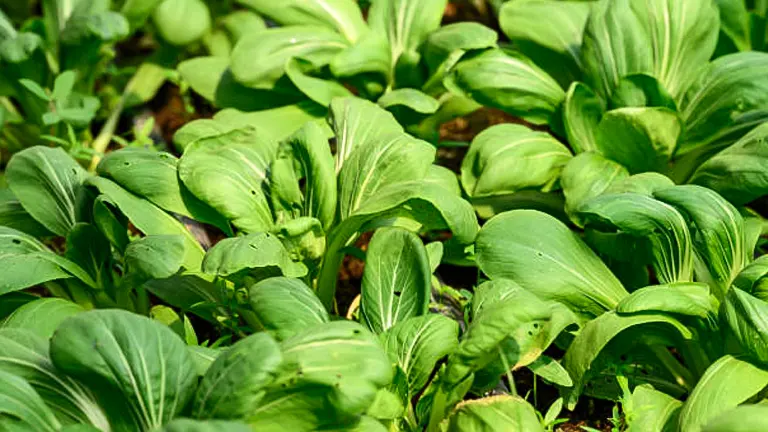
Bok choy, a member of the Brassica family, is renowned not just for its adaptability in culinary applications but also for its ability to thrive across a diverse range of climatic conditions and soil types. Unlike many leafy greens that require specific temperatures and soil conditions, bok choy is comparatively resilient, capable of rapid growth cycles that can complete in as little as 30 to 50 days, depending on the variety and environmental conditions.
Different Varieties
- Traditional Mature Bok Choy: Known for its sturdy white stalks and vibrant green leaves, this variety is a staple in stir-fries and steaming dishes. It reaches maturity in approximately 45-50 days.
- Baby Bok Choy: Smaller and quicker to mature, baby bok choy is ideal for single servings and fast cooking, maturing in just 30 days. Its tender texture makes it perfect for sautéing or adding to soups.
- Shanghai Bok Choy: This variety features jade-green stalks and is celebrated for its sweeter, more tender leaves. It matures in about 35-45 days and is preferred for lighter cooking applications.
- Purple Bok Choy: Distinctive for its rich purple leaves, this variant not only enhances the visual appeal of dishes but is also higher in antioxidants compared to its green counterparts. It matures within 40-50 days.
Nutritional Profile of Bok Choy
Bok choy is a nutritional powerhouse, providing a host of essential vitamins and minerals while being low in calories. Here is a detailed look at its nutritional benefits, expressed per 100 grams of raw bok choy:
| Nutrient | Amount | % Daily Value* |
|---|---|---|
| Calories | 13 kcal | — |
| Protein | 1.5 g | 3% |
| Total Fat | 0.2 g | <1% |
| Carbohydrates | 2.2 g | 1% |
| Fiber | 1.0 g | 4% |
| Vitamin A | 4469 IU | 89% |
| Vitamin C | 45 mg | 75% |
| Vitamin K | 45.5 µg | 57% |
| Calcium | 105 mg | 10% |
| Iron | 0.8 mg | 4% |
*% Daily Values are based on a 2,000 calorie diet.
Bok choy’s high vitamin A and C content makes it excellent for vision and immune system support, while its vitamin K is crucial for blood clotting and bone health. Its fiber content supports digestive health, and its low calorie count makes it a favorable choice for weight management and overall wellness.
Preparing to Plant
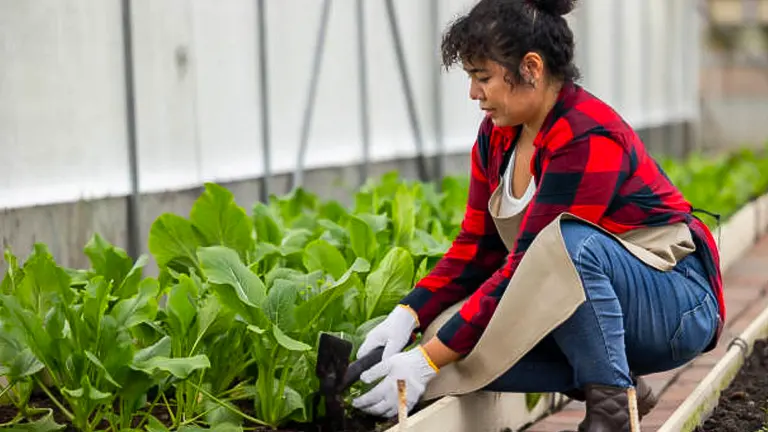
Successful cultivation of bok choy begins with meticulous preparation, involving precise timing and soil management to ensure optimal growth conditions.
Choosing the Right Time
The growth cycle of bok choy is highly dependent on temperature. It thrives in cooler weather, with ideal daytime temperatures ranging from 55°F to 75°F (13°C to 24°C). Planting should ideally occur in early spring or late summer to avoid the heat of mid-summer, which can trigger bolting — the process where bok choy flowers prematurely, leading to bitter leaves.
- Spring Planting: Aim for 2-4 weeks before the last frost when the soil is workable.
- Fall Planting: Plan 6-8 weeks before the first frost date, allowing the plant to mature as the weather cools.
Soil Preparation
Bok choy prefers a well-aerated, nutrient-rich soil with good drainage. The following steps can help prepare the soil for planting:
- Soil Testing and Adjustment: Start by testing the soil pH; bok choy grows best in a slightly acidic to neutral range (pH 6.0-7.5). Use lime to raise the pH or sulfur to lower it based on your soil test results.
- Organic Matter Enrichment: Incorporate 2-4 inches of compost or well-rotted manure into the soil to enhance fertility and improve soil structure. This addition not only boosts nutrient levels but also enhances soil moisture retention, which is crucial for bok choy’s shallow root system.
- Soil Tilth Optimization: Till the soil to a depth of 8-12 inches to ensure it is loose and crumbly. This depth supports the rapid root development of bok choy and prevents soil compaction, which can hinder growth.
Temperature and Light Requirements
Understanding the microclimate of your garden is crucial for optimizing bok choy growth:
- Light: Bok choy requires 3-5 hours of sunlight per day. In regions with strong sunlight, partial shade can prevent overheating.
- Temperature Management: Use mulch to regulate soil temperature and retain moisture. In areas with variable temperatures, consider using row covers to protect plants from sudden drops in temperature or excessive heat.
Optimal Planting Conditions
To further assist gardeners, here’s a table detailing the optimal planting conditions for bok choy, providing a quick reference for best practices:
| Factor | Ideal Condition | Notes |
|---|---|---|
| Soil pH | 6.0 – 7.5 | Adjust with lime or sulfur as needed. |
| Soil Type | Loamy, well-drained | Enrich with organic matter. |
| Planting Depth | 1/4 to 1/2 inch (seeds) | Deep enough to support initial growth. |
| Sunlight | 3-5 hours daily, partial shade viable | Adjust exposure based on local conditions. |
| Temperature | 55°F – 75°F (13°C – 24°C) | Use covers to manage extremes. |
Planting Bok Choy

The method and precision in planting bok choy greatly influence the health and productivity of your crop. Understanding the nuances between starting from seeds versus seedlings, and implementing effective planting techniques, are fundamental for thriving bok choy plants.
Seed vs. Seedling
Choosing between seeds and seedlings depends on your specific circumstances:
- Seeds: Offer more variety and are generally cheaper but require meticulous care, especially in early growth stages, to ensure uniform germination.
- Seedlings: Cost more but are less risky, especially in areas with shorter growing seasons or unpredictable weather. They allow for a more controlled growth environment from the start.
Plant Spacing and Density
Proper spacing is essential for optimal growth and disease prevention:
- Medium Density: Ideal for personal gardens where space is ample.
- High Density: Suitable for commercial production or small spaces optimized for yield.
Planting Techniques
The right depth and technique are key to successful plant establishment:
- Seeds: Should be planted shallowly to ensure light penetration necessary for germination.
- Seedlings: Require careful handling to prevent shock, ensuring the transition from pot to garden is seamless.
Detailed Planting Specifications
This detailed table provides specific planting parameters, designed to offer clarity and advanced guidance for both amateur and professional gardeners:
| Planting Aspect | Seeds | Seedlings | Notes |
|---|---|---|---|
| Depth | 0.25 – 0.5 inch | Set at soil level | Depth precision ensures proper germination/establishment |
| Initial Spacing | 6 inches apart | 6 inches apart | Determines plant health and yield potential |
| Row Spacing | 18 inches | 18 inches | Optimal for machinery or hand cultivation |
| Germination Temp | 55°F – 70°F | Not applicable | Ideal temperature range for seed germination |
| Growth Temp | 60°F – 75°F | 60°F – 75°F | Optimal ambient temperatures for growth |
| Watering Post-Plant | Light, frequent | Moderate, as needed | Adjust based on soil moisture and weather conditions |
| Sunlight Requirement | Partial sun | Partial to full sun | Minimum 3-5 hours of sunlight for optimal growth |
Daily Maintenance and Care for Bok Choy

Maintaining bok choy involves consistent attention to its growing environment, particularly in watering, sunlight exposure, and temperature management. Proper care ensures your plants remain healthy and productive throughout their growth cycle.
Watering Requirements
Bok choy thrives in soil that is consistently moist but not waterlogged. Here are more specific guidelines for effective watering:
- Weekly Watering: Provide approximately 1 inch of water per week. This may increase during periods of drought or decrease during cool, wet seasons.
- Watering Technique: Water deeply to reach the root zone, which encourages roots to grow deeper, enhancing drought resistance. Use a soaker hose or drip irrigation system to apply water directly to the soil, reducing moisture on foliage that can lead to fungal diseases.
- Monitoring Soil Moisture: Use a soil moisture gauge to check that the soil is appropriately moist to a depth of at least 6 inches, which is beneficial for mature bok choy plants.
Managing Sunlight and Temperature
Bok choy’s growth rate and leaf quality are significantly influenced by sunlight and temperature:
- Sunlight Requirements: Ensure your bok choy receives 3 to 5 hours of sunlight per day. In regions with intense sun, use shade cloth to prevent scorching in the midday heat.
- Temperature Control: Bok choy grows optimally between 55°F and 75°F (13°C to 24°C). Use row covers to moderate the microclimate around the plants, providing warmth during unexpected cold snaps and shade during heat waves.
Pruning and Thinning Techniques
While bok choy generally requires minimal pruning, strategic thinning can improve plant health and yield:
- Thinning Seedlings: If started from seeds, thin the seedlings early to the recommended spacing to prevent overcrowding and promote ample air circulation.
- Pruning Mature Plants: Remove any yellowing or damaged leaves promptly to prevent the spread of disease and to redirect the plant’s energy towards growing healthy leaves.
- Improving Airflow and Sun Exposure: For densely planted areas, selectively remove leaves or whole plants to ensure those remaining have enough space and light. This not only improves the health of the plants but also reduces the risk of pest infestations and fungal diseases.
Pest and Disease Management
Protecting your bok choy from pests and diseases is crucial for a healthy harvest. Here’s how to manage these challenges effectively.
- Bok choy is susceptible to pests like aphids, flea beetles, and cabbage worms. Regular inspections are crucial; look under the leaves and along the stems. Treat infestations early with organic pesticides or introduce natural predators like ladybugs into your garden. Physical barriers, such as floating row covers, can also be effective in preventing pests from reaching the plants.
- Common diseases affecting bok choy include clubroot, downy mildew, and black rot. To prevent these, ensure good drainage in your soil and practice crop rotation to minimize soil-borne diseases. Remove any affected plants immediately to prevent the spread of disease. Applying fungicides can be considered, preferably organic, to manage outbreaks without harming the ecosystem.
Harvesting Bok Choy
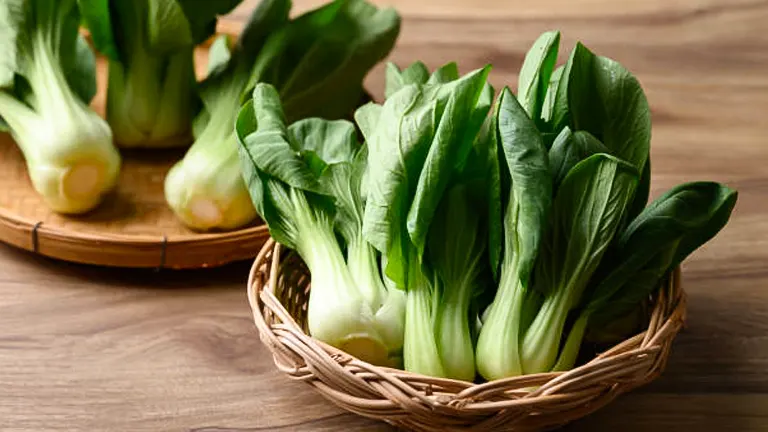
Harvesting at the right time with the proper technique ensures maximum flavor and nutritional value from your bok choy plants.
When to Harvest
The timing of your bok choy harvest depends on the variety and desired maturity. Here are detailed guidelines:
- Baby Bok Choy: Ready to harvest in as little as 30 days, with leaves typically 3 to 6 inches long and a firm base.
- Mature Bok Choy: Typically harvested between 45 and 60 days after planting. The leaves should be large, crisp, and vibrant, and the base should be firm to the touch.
- Best Time of Day: Harvest bok choy early in the morning when moisture levels are at their peak, giving the leaves maximum hydration and crunch. This timing also reduces stress on the plant, maintaining overall vitality.
Harvesting Techniques
Utilizing the right technique will not only give you quality yields but also extend the productivity of your plants:
- Whole Plant Harvest: For immediate consumption or a single large harvest, use a sharp knife to cut the bok choy just above the soil level. Leaving the root system in the soil helps maintain structure and nutrients.
- Continuous Harvest: For a prolonged harvest period, pick the outer leaves first, leaving the inner leaves intact to continue growing. This method allows the plant to regenerate and deliver a steady supply of fresh leaves over several weeks.
- Post-Harvest Care: Immediately rinse harvested bok choy leaves in cool water to remove soil and field heat, which can degrade quality. Gently dry with paper towels or a salad spinner before storing to prevent excess moisture buildup, which can cause rotting.
Harvesting Guidelines
Here’s a summary table to guide harvesting practices based on specific bok choy varieties and techniques:
| Variety | Time to Harvest | Harvest Technique | Notes |
|---|---|---|---|
| Baby Bok Choy | 30-35 days | Whole or Continuous | Ideal when leaves reach 3-6 inches in length |
| Mature Bok Choy | 45-60 days | Whole or Continuous | Harvest at a firm base and vibrant green leaf color |
| Shanghai Bok Choy | 35-45 days | Whole | Sweeter flavor, harvest at a larger leaf size |
| Purple Bok Choy | 40-50 days | Whole or Continuous | Harvest for enhanced antioxidants and color |
Storing and Using Bok Choy
Proper storage and innovative culinary applications can maximize your enjoyment and utilization of bok choy.
- After harvesting, bok choy should be washed under cold water and dried thoroughly. It can be stored in a plastic bag with a few paper towels to absorb excess moisture, and kept in the crisper drawer of your refrigerator. Properly stored, bok choy can last for about a week. For longer preservation, blanching and freezing is an option.
- Bok choy is incredibly versatile in cooking. It can be sautéed, steamed, or stir-fried, making it a fantastic addition to soups, salads, and main dishes. The mild flavor of bok choy pairs well with a variety of ingredients including garlic, ginger, soy sauce, and sesame oil. Experiment with bok choy in your favorite recipes or try it as a healthy side dish lightly seasoned with salt and pepper.
Related Post
- How to Fertilize Bougainvillea: A Complete Guide for Stunning Blooms
- How to Fertilize Apple Trees: Essential Tips for a Bountiful Harvest
- How to Fertilize Lemon Trees: Secrets for Thriving Citrus
- How to Fertilize Avocado Tree: A Step-by-Step Guide for Lush Growth
Conclusion
Cultivating bok choy in your home garden is a rewarding endeavor that yields fresh produce perfect for a variety of dishes. By following this comprehensive guide, you can grow, care for, and harvest bok choy with confidence. Enjoy the fresh flavors right from your garden and explore new culinary adventures with this versatile vegetable.
FAQs
- Can bok choy be grown in containers?
Yes, bok choy is well-suited for container gardening. Choose a container at least 8 inches deep and ensure it has good drainage. Use a high-quality potting mix and keep the soil consistently moist. This makes it a great option for balconies or small spaces. - What is the best companion plant for bok choy?
Bok choy grows well alongside beets, celery, and cucumbers, which can help deter pests and utilize garden space efficiently. Avoid planting it near strawberries or tomatoes, as they can compete for nutrients. - How do you prevent bok choy from bolting?
To prevent bolting, a premature flowering that occurs when the plant is stressed, ensure to plant bok choy during cooler periods of the growing season. Providing shade during hot days and maintaining consistent soil moisture can also help. - Is bok choy prone to any specific nutrient deficiencies?
Bok choy can show signs of magnesium or calcium deficiencies, often evident by yellowing leaves or weak growth. Amending the soil with dolomitic lime or Epsom salts can help address these deficiencies effectively. - How often should bok choy be fertilized?
Fertilize bok choy lightly using a balanced, water-soluble fertilizer every three to four weeks. Over-fertilizing can lead to rapid, lush growth that attracts pests and diseases, so moderation is key. - What are some natural remedies to combat pests on bok choy?
Neem oil and insecticidal soaps are effective against pests like aphids and flea beetles. Introducing beneficial insects, such as ladybugs, can naturally control pest populations as well. - Can bok choy be regrown from scraps?
Yes, you can regrow bok choy from the leftover base. Place the stump in a container with a small amount of water, ensuring it is not submerged. After a few days, roots and new leaves will begin to appear, at which point it can be transplanted to soil. - What is the ideal pH for growing bok choy?
Bok choy prefers a soil pH between 6.0 and 7.5. Testing your soil pH before planting and adjusting it if necessary can lead to healthier growth and better yields.
With the tips provided, you’re well-equipped to grow and care for bok choy successfully. Embrace the guidance, watch your garden flourish, and enjoy the fresh, crisp taste of home-grown bok choy in your favorite dishes. Happy gardening!

Kristine Moore
Forestry AuthorI'm Kristine Moore, a seasoned garden landscaping professional with over 30 years of experience. My extensive career has been dedicated to transforming outdoor spaces into stunning, sustainable landscapes. With a deep understanding of horticulture, design principles, and environmental stewardship, I have become a respected figure in the field, known for creating harmonious, visually appealing, and eco-friendly gardens. My commitment to excellence and continuous learning in landscaping trends and techniques has solidified my reputation as an expert in garden design and implementation.












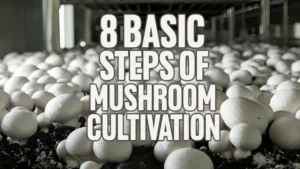
Leave your comment